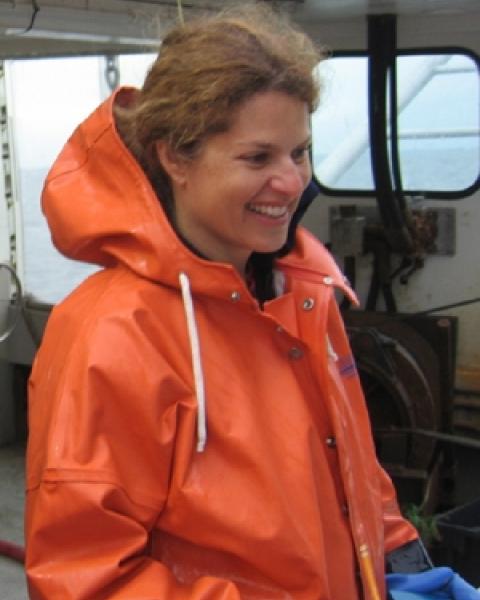This research was published in the INSPIRED: A Publication of the New Hampshire Agricultural Experiment Station (Fall 2024)
Researchers: E. A. Fairchild, M. Doherty and M. Chambers
Infestations by sea lice—marine parasites that attach and injure salmon and trout—are a major challenge for seafood farmers due to the high management costs and lower productivity. Traditional control methods, such as chemotherapeutics and thermal treatments, are costly and often require specialized equipment, consistent regulatory approval, and can have detrimental environmental impacts, making them less practical for widespread use. One sustainable solution could be to use cleaner fish. In Europe and Canada, lumpfish (Cyclopterus lumpus) have been effectively used as biological control for sea lice (Caligus elongatus and Lepeophtheirus salmonis). However, their use within U.S. steelhead trout farms is not as widespread, in part because there are limited data and associated best management practices for using lumpfish on steelhead trout farms.
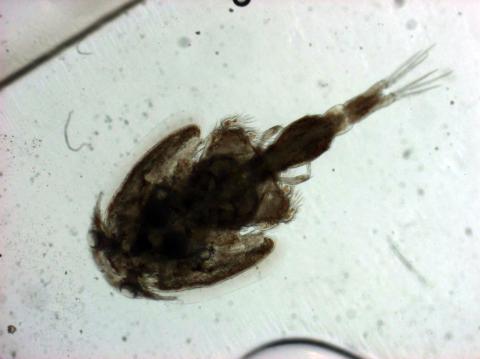
Fig. 1. Microscopic examination of sea lice, an external parasite that affects farmed fish populations.
Background and Key Concepts
The steelhead trout farming industry in the northeastern United States is growing rapidly, driven by increasing consumer demand for local and sustainably sourced seafood. According to market reports, the U.S. trout market is expected to exhibit a compound annual growth rate of 6% from 2024 to 2032, with the Northeast region playing a significant role in this expansion. Steelhead trout are being increasingly cultured as a partial alternative to wild-caught species, providing economic benefits to local communities and supporting the infrastructure used by commercial fishermen.
Sea lice (Fig. 1) are ectoparasites that attach to fish, causing stress, reduced growth rates, and increased susceptibility to diseases. Caligus elongatus is the dominant species in New Hampshire waters, and they are an important economic and management barrier to seafood farmers who are considering or have already included steelhead trout production.
Methodology
Key Findings
- Lumpfish presence in the Gulf of Maine has increased since 1980.
- The distribution of lumpfish has shifted northeast over time, likely as a result of climate-induced warming.
- Lumpfish can play a role in sustainable biocontrol of sea lice. Managing their wild populations in the face of climate change and fishing pressure requires continued sampling and monitoring.
About the Co-author
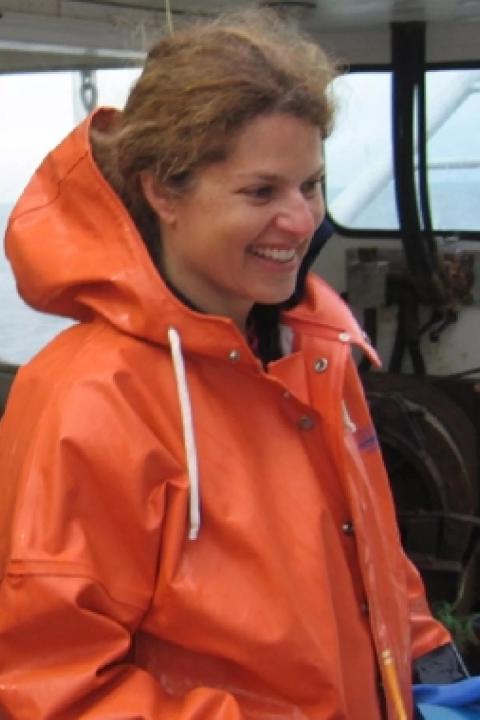
Elizabeth Fairchild, Research Associate Professor of Biological Sciences
Contact information: Elizabeth.Fairchild@unh.edu, FindScholars profile
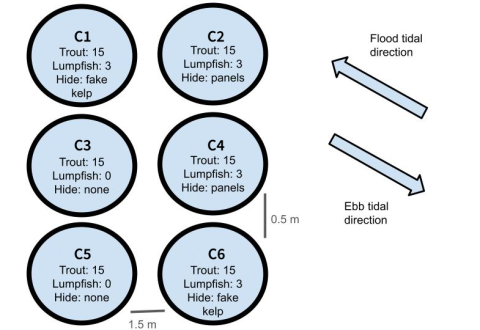
Fig. 2. Experimental design of the in situ steelhead trout study. C1-C6 represent the individual trout Containers. General tidal current directions are represented by arrows.
Two trials were conducted at the University of New Hampshire’s Judd Gregg Marine Research Complex Pier, each lasting five weeks. Steelhead trout were sourced from New Hampshire's Sumner Brook Fish Farm and acclimated before being placed in six cylindrical experimental cages, each stocked with 15 steelhead trout (Fig. 2). Four of these cages included lumpfish at a density of 20%. The cages were equipped with different hide designs—kelp and PVC panels—to optimize lumpfish welfare and cleaning efficiency (Fig. 3 and 4).
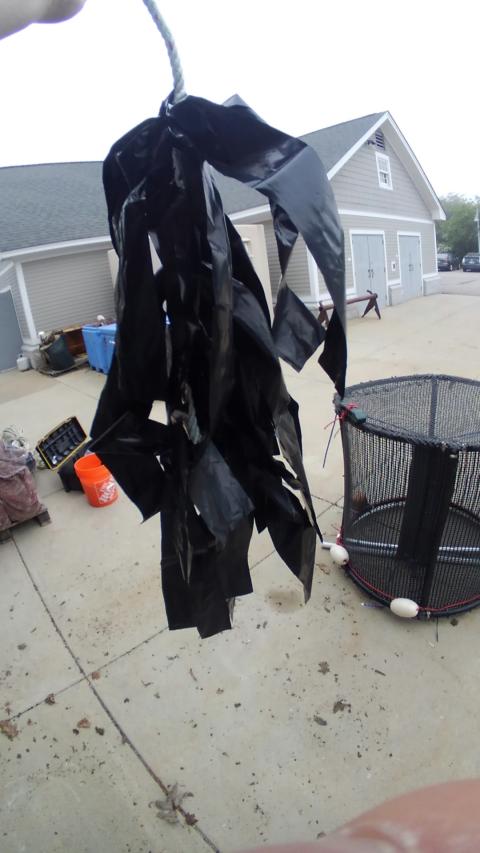
Fig. 3. Artificial kelp structures offer lumpfish a place to hide and reduce stress in aquaculture environments.
Throughout the trials, data on sea lice loads, water temperature, fish survival, and lumpfish stomach contents were collected to assess the effectiveness of lumpfish in controlling sea lice infestations. Sea lice loads on steelhead trout were monitored weekly, while water temperature was recorded every two hours. At the end of each trial, all fish were euthanized following approved procedures by the UNH Institutional Animal Care and Use Committee, weighed, and dissected to examine their stomach contents and assess their overall health. Statistical analyses were conducted to determine the significance of differences in sea lice loads between treatments.
Discussion of Findings
Sea lice loads on steelhead trout peaked in January, with an average of 3.6 lice per fish. The study confirmed the predominance of Caligus elongatus in New Hampshire waters. The presence of lumpfish significantly reduced sea lice loads, particularly in cages with kelp hides. Kelp hides were more effective than PVC panels in supporting lumpfish cleaning activities and reducing sea lice infestations, indicating the importance of providing suitable habitats for cleanerfish within aquaculture systems.
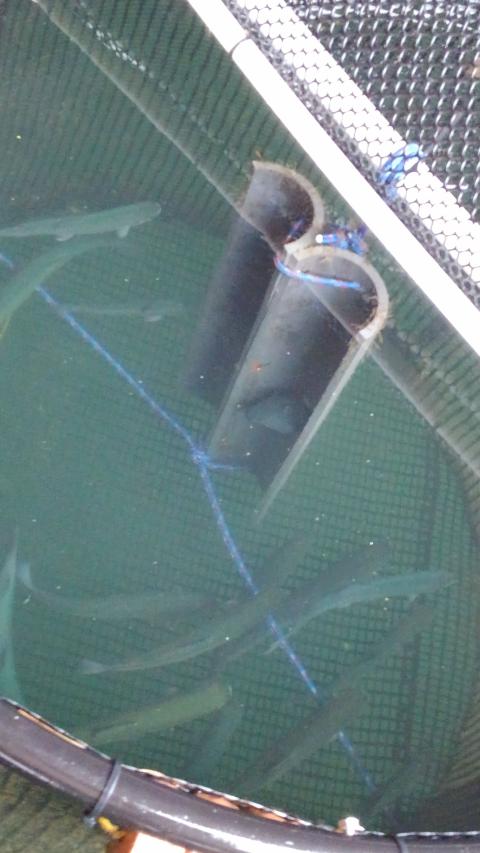
Fig. 4. A PVC hide provides lumpfish with shelter inside an experimental aquaculture cage.
In both trials, steelhead survival ranged from 94% to 99%, while lumpfish survival ranged from 75% to 100%. Lice loads were 40% lower in kelp hide containers than in PVC hide containers, and 46% lower than in control containers without lumpfish or hides. The presence of lumpfish reduced lice loads by 37%. Lumpfish also carried lice, with weekly counts ranging from 0 to 9 per fish. Additionally, the absence of sea lice in lumpfish stomachs suggests indirect cleaning behavior, possibly through deterrence or non-ingestive removal mechanisms.
Strategic Recommendations and Conclusion
Scaling up the use of lumpfish at commercial operation sites by optimizing stocking densities and hide designs can improve sea lice management in steelhead trout farms. Sustainable aquaculture practices, including the use of biological controls like lumpfish rather than reliance on chemical treatments, could help minimize detrimental environmental impacts and support industry growth through cost-effective integrated pest management.
Specific recommendations include:
- Optimal Conditions: Utilize smaller lumpfish (20–140g) during colder months or in colder regions, as they are more effective in reducing sea lice loads.
- Hide Designs: Incorporate kelp hide designs in sea containers to enhance the delousing efficacy of lumpfish.
- Further Research: Larger-scale trials are needed to validate findings and explore the interaction of lumpfish and steelhead trout on commercial farms.
This material is based on work supported by the NH Agricultural Experiment Station through joint funding from the USDA National Institute of Food and Agriculture (under Hatch award number 7007270 and 7006646) and the state of New Hampshire.
